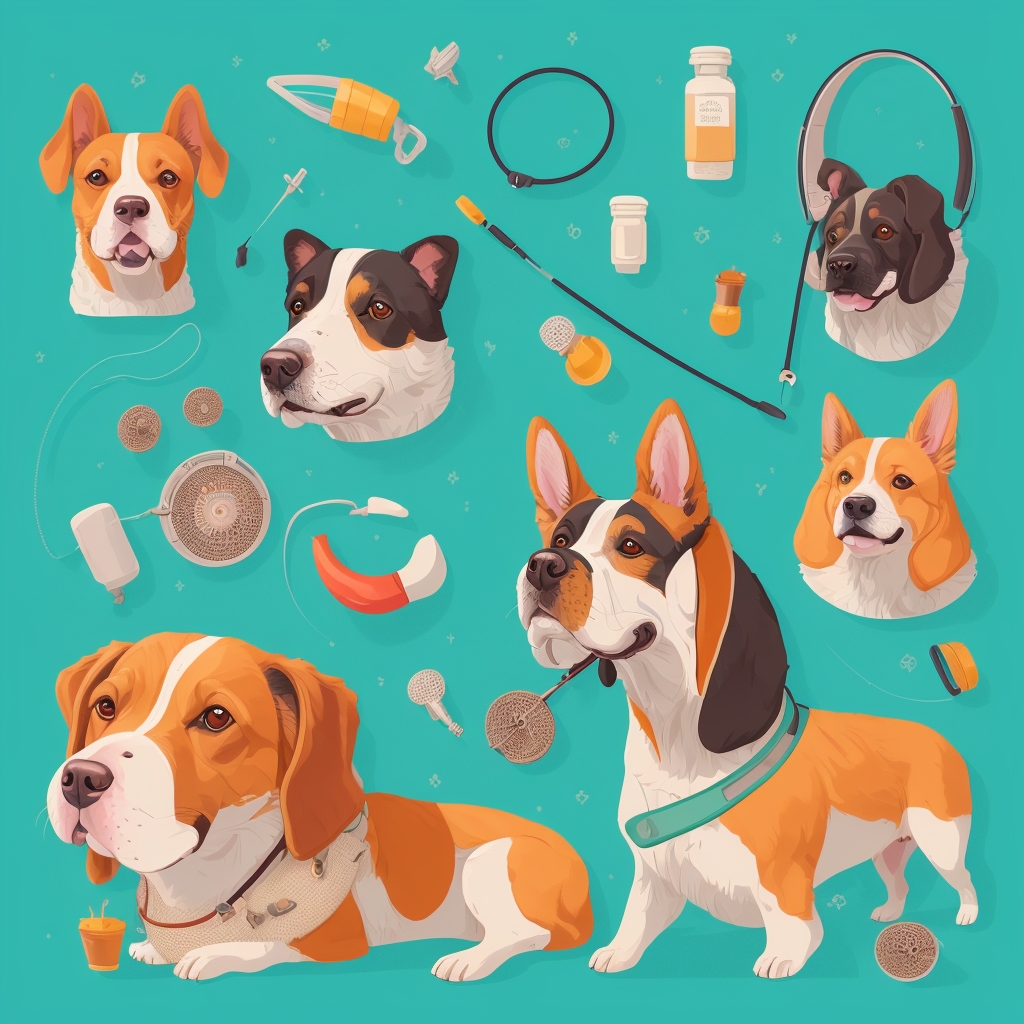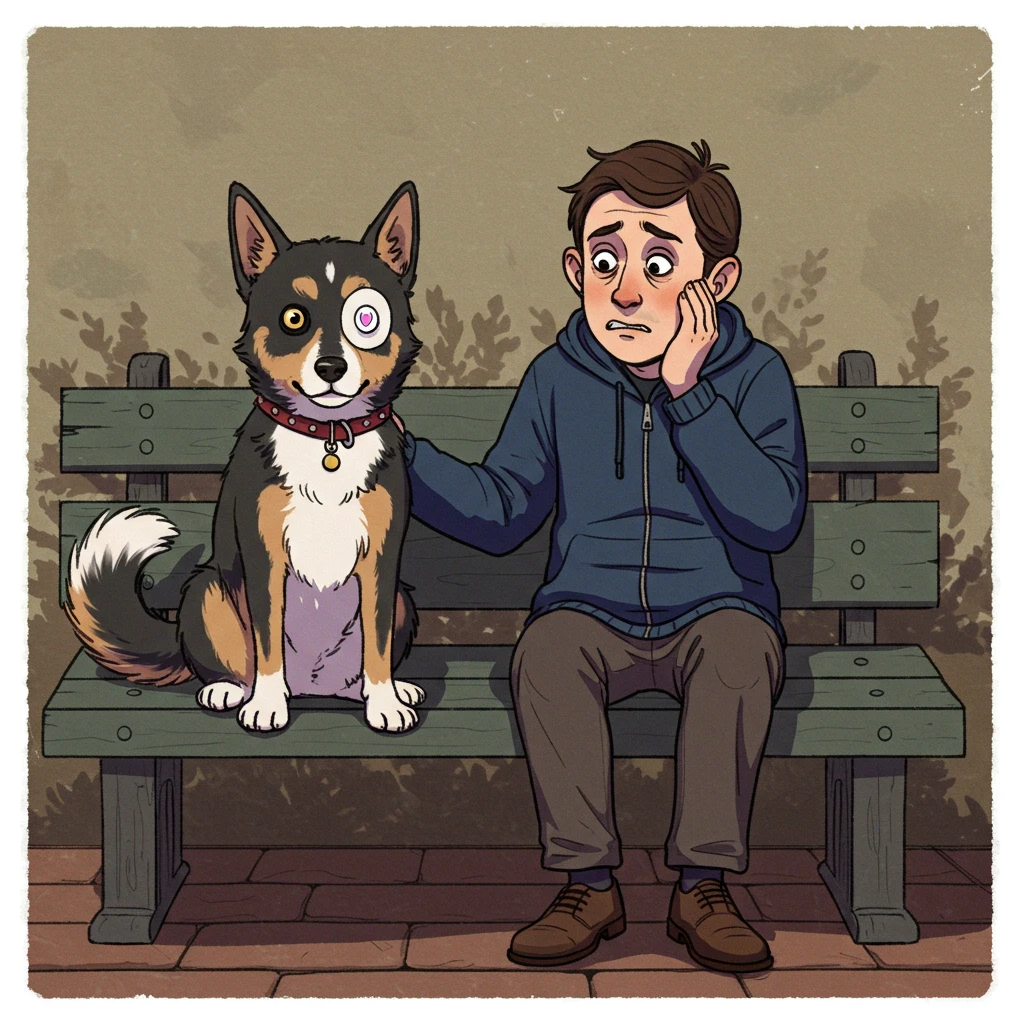The well-being of our canine companions is, understandably, a growing concern for many pet parents today. What’s truly fascinating is how a simple, yet profound, act like massage can significantly elevate your four-legged friend’s quality of life. Beyond just a pampering session, massage and relaxation techniques aren’t just about stress and anxiety relief; they actively promote your dog’s holistic physical and emotional health. Indeed, the pet wellness industry is booming, with a 9.2% increase in buy rate in wellness categories, highlighting a collective shift towards more holistic care for our furry family members. This article will dive deep into various dog massage techniques, their proven benefits, and practical, actionable tips for integrating them seamlessly into your pet’s routine.
The Profound Benefits of Canine Massage
A Calming Touch: Stress and Anxiety Reduction
It’s a common sight: a dog pacing before a thunderstorm or a rescue pup struggling to settle into a new home. Here’s the thing though: massage can genuinely help reduce stress and anxiety in dogs. Just like in humans, that gentle, soothing touch can trigger the release of endorphins—those wonderful “feel-good” hormones. This isn’t just anecdotal; studies show that massage can decrease cortisol levels (a stress hormone) and elevate serotonin levels, promoting a calmer state. This is especially beneficial for dogs suffering from stress due to environmental changes, noise phobias, or even separation anxiety. In fact, recent data from 2024-2025 paints a clearer picture: while a staggering 99.12% of dogs in the U.S. exhibit some form of behavior issue, nearly 50% specifically struggle with fear and anxiety. What’s encouraging is that 59% of dog owners are now actively seeking calming products, a significant jump from just 22% in 2018. It’s clear our dogs need our help to navigate their anxious moments.
Boosting Vitality: Improved Blood Circulation
Beyond calming nerves, specific massage techniques actively promote better blood circulation. What does this mean for your dog? Simply put, enhanced blood flow helps oxygenate muscles and tissues more efficiently, which is crucial for overall cellular health. This improved circulation can also contribute to faster recovery after intense physical exertion, like a long hike or a vigorous play session, and even aid healing post-injury. It’s a crucial component for overall vitality, helping them bounce back quicker and feel their best.
Easing Aches: Muscle and Joint Pain Relief
For our beloved senior dogs, or those grappling with chronic conditions like arthritis or hip dysplasia, regular massages can be a game-changer. Appropriately applied techniques can help relieve pain and significantly improve mobility. My personal experience, supported by research, suggests that massage isn’t just about temporary relief; it can make long-term differences, offering a better quality of life. One study, for instance, found that 492 out of 527 dogs showed a significant reduction in pain severity scores after undergoing canine massage therapy, underscoring its profound therapeutic potential.
Essential Dog Massage Techniques You Can Master
Swedish Massage: The Foundation of Relaxation
Swedish massage is a widely popular technique that employs long, flowing strokes to encourage deep muscle relaxation. It’s often where I suggest new practitioners start because it’s wonderfully effective and relatively straightforward, a truly comforting experience for many dogs. To perform a Swedish massage on your dog, you’ll want to:
- Preparation: First and foremost, choose a quiet, serene, and comfortable spot. Think soft lighting, perhaps a cozy bed. It’s crucial to ensure your dog is already relaxed and at ease; forcing it will only defeat the purpose and create a frustrating experience for both of you.
- Movements: Using the broad palm of your hand, make slow, gentle strokes along your dog’s back. Start from their neck and work your way smoothly towards the tail, following the natural contours of their body.
- Pressure: Apply moderate, consistent pressure. The key here is to be careful not to press too hard on bony areas or joints. Your dog’s reactions will be your best guide! They’ll tell you what feels good.
Pressure Point Massage: Tapping into Targeted Relief
Pressure point massage, also known as acupressure, focuses on specific areas of the body that, when massaged, can relieve pain and promote relaxation. It’s a fascinating ancient art that’s gaining traction in canine wellness, offering a more targeted approach. Here’s how you can explore it safely:
- Identifying Points: Common, accessible pressure points in dogs are often found around the base of the ears, along either side of the spine, and surprisingly, on the paws. These points can feel slightly different, sometimes a bit more taut or tender.
- Techniques: Use your thumb or fingertips to apply gentle, steady pressure to these points. Hold for about 5 to 10 seconds, then slowly release. Crucially, observe your dog’s reaction throughout. Are they leaning into it? Or pulling away? Adjust the pressure and duration based on their comfort – their feedback is paramount.
Deep Tissue Massage: For the More Active or Ailing Canine
This technique is, as the name suggests, more intense and aims to release deeper muscle tension. It’s particularly beneficial for active, athletic dogs who might experience muscle soreness, or those dealing with chronic pain that originates deeper within the muscle fibers. This isn’t just a surface rub; it’s about getting to the core of the issue.
- Technique: Use your fingers and the heel of your palm to apply firmer, more direct pressure. The goal is to target the muscles beneath the superficial layers of the skin, gently kneading and compressing. You might feel knots or areas of tension.
- Duration: Deep tissue massage should generally be performed for shorter durations, perhaps around 5 minutes per area, always ensuring your dog remains comfortable and shows absolutely no signs of pain. If they flinch or show discomfort, ease up immediately. We’re aiming for relief, not distress.
Real-World Impact: Concrete Examples and Use Cases
These techniques aren’t just theoretical; they deliver tangible results for dogs and their owners, transforming daily lives.
Case 1: An Anxious Dog Finds Peace
Consider Luna, a lively Border Collie who, frustratingly, became a trembling mess during every thunderstorm. Her owner, Sarah, started incorporating short Swedish massage sessions an hour before predicted storms. The difference was remarkable. Luna showed visible signs of relaxation—less panting, less pacing, and was able to manage her anxiety far more effectively, often settling down in her safe space instead of panicking. This anecdotal success aligns with broader scientific understanding that physical touch and positive human-animal interaction can significantly reduce anxiety and improve mood in canines.
Case 2: An Elderly Dog Regains Mobility
Then there’s Max, a 12-year-old Labrador Retriever suffering from debilitating arthritis in his hips. His owner, David, began regular deep tissue massages focusing on Max’s hindquarters. After several weeks of consistent, gentle sessions, David observed a noticeable improvement in Max’s mobility. He was able to get up and down more easily, navigate stairs with less struggle, and even enjoyed short walks again, proving that targeted massage can indeed enhance a senior dog’s quality of life and bring back some of their youthful vigor.
Case 3: Competition Preparation for a Working Dog
Even high-performing dogs can benefit. Bella, a German Shepherd competing in agility trials, often had stiff muscles after intense training. Her handler, Emily, integrated a brief pressure point massage into her warm-up routine before each event. This helped relax Bella’s key muscle groups, surprisingly improving her flexibility and, as Emily believes, her overall performance and focus during the competition. It’s about optimizing their physical readiness and ensuring they’re primed for peak performance.
Expert Insights: Key Points and Best Practices
To truly make canine massage a rewarding experience for both you and your dog, keep these expert-backed principles in mind:
- Listen to Your Dog: Every dog is a unique individual. Their reactions are your most valuable feedback. Observe their body language during the massage—a relaxed sigh, a leaning into your hand, or even a soft gaze tells you you’re on the right track. If they pull away, tense up, or show any discomfort, stop immediately and reassess. As Dr. Sarah Blotevogel, a certified canine massage therapist, emphasizes, “If they are clearly showing signs of stress, and I’m going to make that worse, then I’m not going to force it.” This is perhaps the single most important rule.
- Create a Soothing Environment: A quiet, comfortable space free from distractions is absolutely essential. This helps maximize the profound benefits of the massage, allowing your dog to truly relax and feel safe. Think of it as creating their personal spa.
- Be Patient: Dogs can take time to get used to massage, especially if touch isn’t something they’re accustomed to. Start with very short sessions (even just a minute or two) and gradually increase the duration as your dog becomes more comfortable and receptive. Remember, it’s a journey, not a race, and building trust is paramount.
- Consult a Professional: If you’re new to canine massage, or if your dog has underlying health conditions, it’s always wise to consult a veterinarian or a certified animal massage therapist. They can provide tailored advice, demonstrate appropriate techniques, and ensure you’re not inadvertently causing harm. Some conditions, like infections, open wounds, or cancerous tumors, are contraindications for massage, so always check first.
- Integrate Massage into the Routine: For the best and most lasting results, integrate massage into your dog’s weekly routine. Consistency is key, allowing the benefits to accumulate over time. This consistent, positive interaction also plays a crucial role in strengthening the bond you share with your faithful friend, turning a therapeutic act into a cherished ritual.
Conclusion
Massage and relaxation techniques are, without a doubt, powerful tools for enhancing the well-being of our dogs. Whether your goal is to reduce anxiety, improve vital blood circulation, or offer much-needed relief from muscle and joint pain, the impact of massage on your companion’s quality of life can be truly significant. By diligently following these best practices and remaining acutely attentive to your dog’s individual needs, you can transform these massage moments into a deeply enriching and bonding experience for both of you. Ultimately, remember that patience and love are the undeniable keys to a successful massage experience. After all, a happy dog isn’t just a joy to behold; a happy dog is often a healthy dog.
Sources
- numerator.com
- The American Pet Products Association (APPA) Releases 2024 Dog and Cat Owner Insight Report. https://vertexaisearch.cloud.google.com/grounding-api-redirect/AUZIYQHqgO3Jq6cPN3wLT-wTwykNaUyVhB2Behu9ZYC0g5UQcHJrioKLYdvPpSgZLV_rs9slA_cdAfQ0Z6FaxZ9DETAAqETqxx9ATTYj5mj6sQqohxjijTLCynPd2HKwkVd4vmqc4f9hbUV-IjT79u2xr7h0ADWdyg5RJxCO1GkOg8XnD1-Yz-GYTvfyFyWzmkyqdRqn0nqUpDWiD7Ns2AgiIBN1AP-3kLKnL
- Paws and Reflect: 2025 Pet Trends in a Post-Pandemic World - Numerator.com. https://vertexaisearch.cloud.google.com/grounding-api-redirect/AUZIYQFgEifKGhkBE2TCD_RlOjrdYvSztcqAAcdY77lg9Cg1z7DDlZxgyMwYvgQRr0EeaiUxDLRcHuqV_mqKID7zFod88puY2Zwp4zQXlQuGiac532GUWTkh3GQ5Sd9sSZ42ssTf2o8d02WJGAULF6e9AqBruAKI_RI3gk0NT-Ev
- Study Finds Over 99% of Dogs in U.S. Show Moderate to Severe Behavior Issues. https://vertexaisearch.cloud.google.com/grounding-api-redirect/AUZIYQFI77qjkeWj22kVXwg_XM5xb8YObs2gufHl0EVTaFswURnQhHnsqjgbtWm3DVvgOfAuqytGIlei9HlnsmZ4ylzaMp-fblUZACvx3fwvLe2hN3WCzmojZ_-Mbn6VhR80qsUULnlNWKzp3ZCL-Ea9vZ_GTdqTfEbF09Yhws8lD5pHeIpzRPWTxBBKtiLrT0iEF_c=
- Study reveals: Over 70% of dogs display symptoms of anxiety – Dorwest. https://vertexaisearch.cloud.google.com/grounding-api-redirect/AUZIYQEIPRN5xuRD6I2NpLcuFpEeNoTOMWM3A3TyiHqsPSPiaB7XGe1KSMTYl_6rTPQ8vvqNZ8CB3mL1Q0lMgwaQgwraVXkhMYDZg2dgiZyxZ3opuLbY4kYf3v5HVCEMgAulshbgPtm-WIU8EJ8DnrjodDUGbkyI9zwUQWE=
- Exploring the Alarming Statistics of Dog Behavior Problems in the US - Vet Strategic. https://vertexaisearch.cloud.google.com/grounding-api-redirect/AUZIYQEWhFo1l3EBPlP44hDb8x_uHjen9E3kccXksnm40t5zIUJ6TPx_uwufDk2YbG0XfQ24hqO99AFRPp-t_bQgOJhdfSIjCz4PpYaufYyfR5lyp5qrz3Esf-JFZuwTsj3WI6IyfCFCfuwPURntC_1b-Bm8QPC_Rl4Z2G0eCnwDlz93ud_hS4pYRPpkl6hOfNE3b4EDLCJRib5-YX5EzJw=
- Pet Calming Products Market Size | Industry Report, 2030 - Grand View Research. https://vertexaisearch.cloud.google.com/grounding-api-redirect/AUZIYQFyLKL0jZn4-ZfSKYODxBgb1uCLVMjFW7rfem7IeiuYgD_WVfsTxpQ2hyeV7YD9Oy1Su16JS1mJ5qA4-GL5h2Ku2ul3rOZfRYOQaD62pi3mao7Jm2_IJ8XXmueVPbx-7j860YMLMdhC5XFpyiaqAfClXwT5kHZqBKF6m7Pt7drO4-4ZE-gspAEFB7aFCrBbmpA=
- Almost every dog in the US has a behavior problem, study finds - DVM360. https://vertexaisearch.cloud.google.com/grounding-api-redirect/AUZIYQGeHlyvx68irSsyQwR-1cBUGCAn5lwyjLnLFcI9YIQbyBVc_I0dNWlAefsEaghjSn-ldhKco2g7LtwWmru_ZiVDqPA5KpRWzcWoMjUyPC1Or3DiN6lYPs_vi0N1w7HIJltg-KV6hwRxWkYyUdSMaQQ0qIZI7rAbxBy6bxIbCOddM9EuOoK12oietB-DtvwyWcVMr7E=
- More Than 99% Of US Dogs Have Behavior Problems - Newsweek. https://vertexaisearch.cloud.google.com/grounding-api-redirect/AUZIYQGtC40o8ZtpX3i6ntOMfJJwlRU_Irc4DRI8_uMlQGtERELdopMEzLAp_fQm5mg9c3WAZo8HHfJUFo1eQKCMWn6m3TniyX540bpMb5U3yYPb02uiZ0KOysnmk6f665_VzF5cwC4GA57yuxKs6bs3D-GPA4s8riuQOm2IIcaQyQs2j-_dN_bYAiLe-YNySsnzTFqT3NOw







